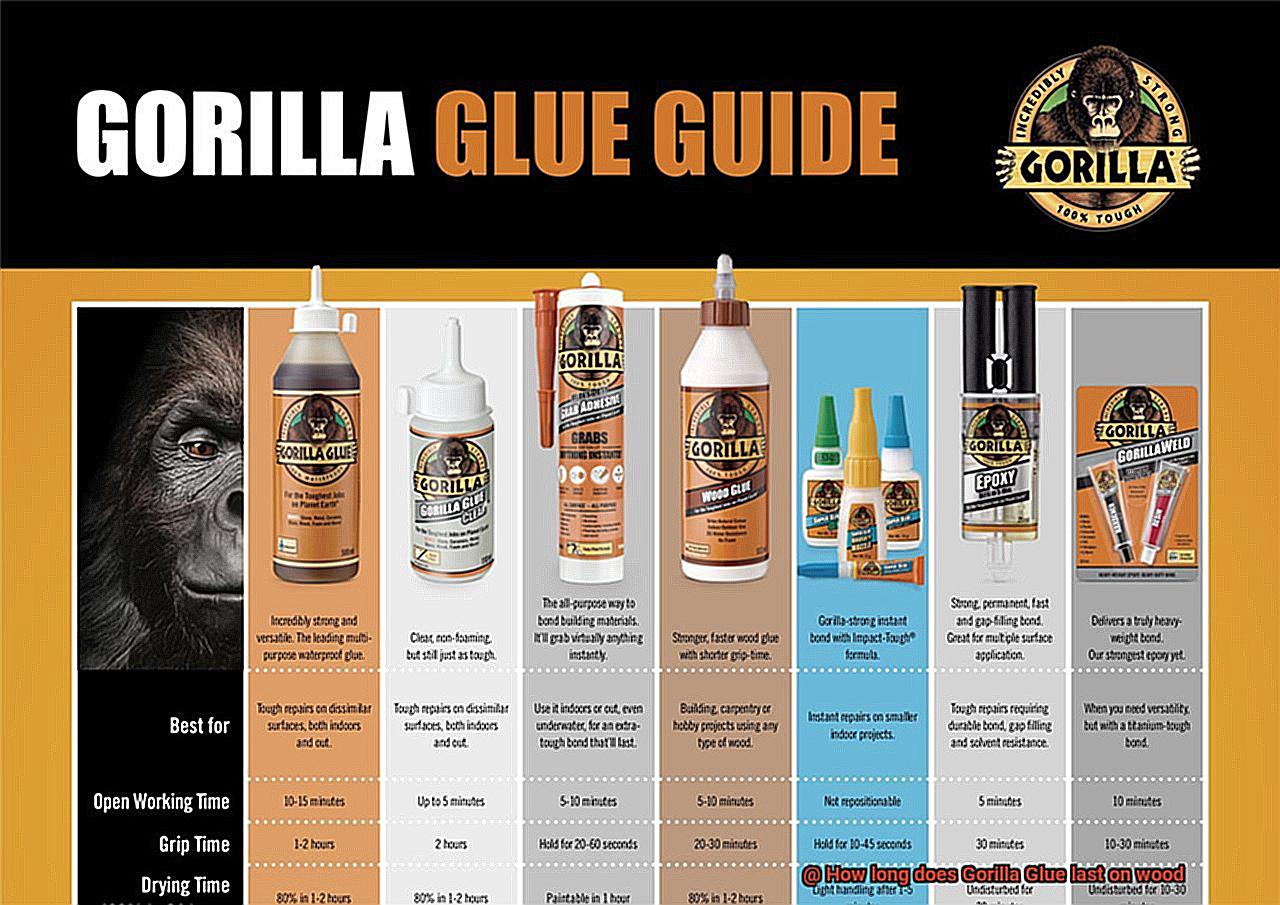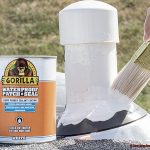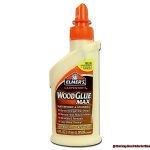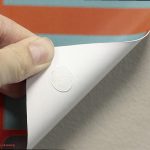TiGot a woodworking project on your hands? Well, you’re in luck because we’re about to dive into the world of Gorilla Glue and its unwavering grip on wood. If you’ve ever wondered how long this stuff can hold things together, then stick around (pun intended) as we explore the ins and outs of Gorilla Glue’s staying power.
Whether you’re a DIY enthusiast or a seasoned pro, having an adhesive that stands the test of time is crucial. And that’s where Gorilla Glue steps in – a name that screams strength and reliability. But let’s get down to business: just how long does this glue really last on wood?
In this blog post, we’ll be digging into the nitty-gritty details that affect Gorilla Glue’s longevity. We’ll cover everything from the application process to environmental factors and even the type of wood being bonded. Because hey, when it comes to making informed decisions about which adhesive to use, knowledge is power.
So get ready for some adhesive enlightenment as we unravel the secrets behind Gorilla Glue’s exceptional efficacy. Whether you’re fixing something small or embarking on a grand woodworking adventure, this glue’s lasting impression will leave you in awe – literally.
Join us as we embark on this journey through the world of wood and Gorilla Glue. Together, we’ll unlock all those burning questions about durability and longevity. It’s time to appreciate the remarkable bond formed by craftsmanship and innovation – one sticky situation at a time.
Factors Affecting the Longevity of Gorilla Glue on Wood
Contents
- 1 Factors Affecting the Longevity of Gorilla Glue on Wood
- 2 How Does Gorilla Glue Create a Strong Bond?
- 3 Indoor Applications: Long-Lasting Bond
- 4 Outdoor Applications: Weakening of Bond Over Time
- 5 Preparing Wood Surfaces for Maximum Durability
- 6 Following Manufacturer’s Instructions for Optimal Results
- 7 Additional Support to Ensure Secure and Long-Lasting Bond
- 8 Breaking or Removing Gorilla Glue from Wood Surfaces
- 9 Specialized Products for Specific Wood Applications
- 10 Conclusion
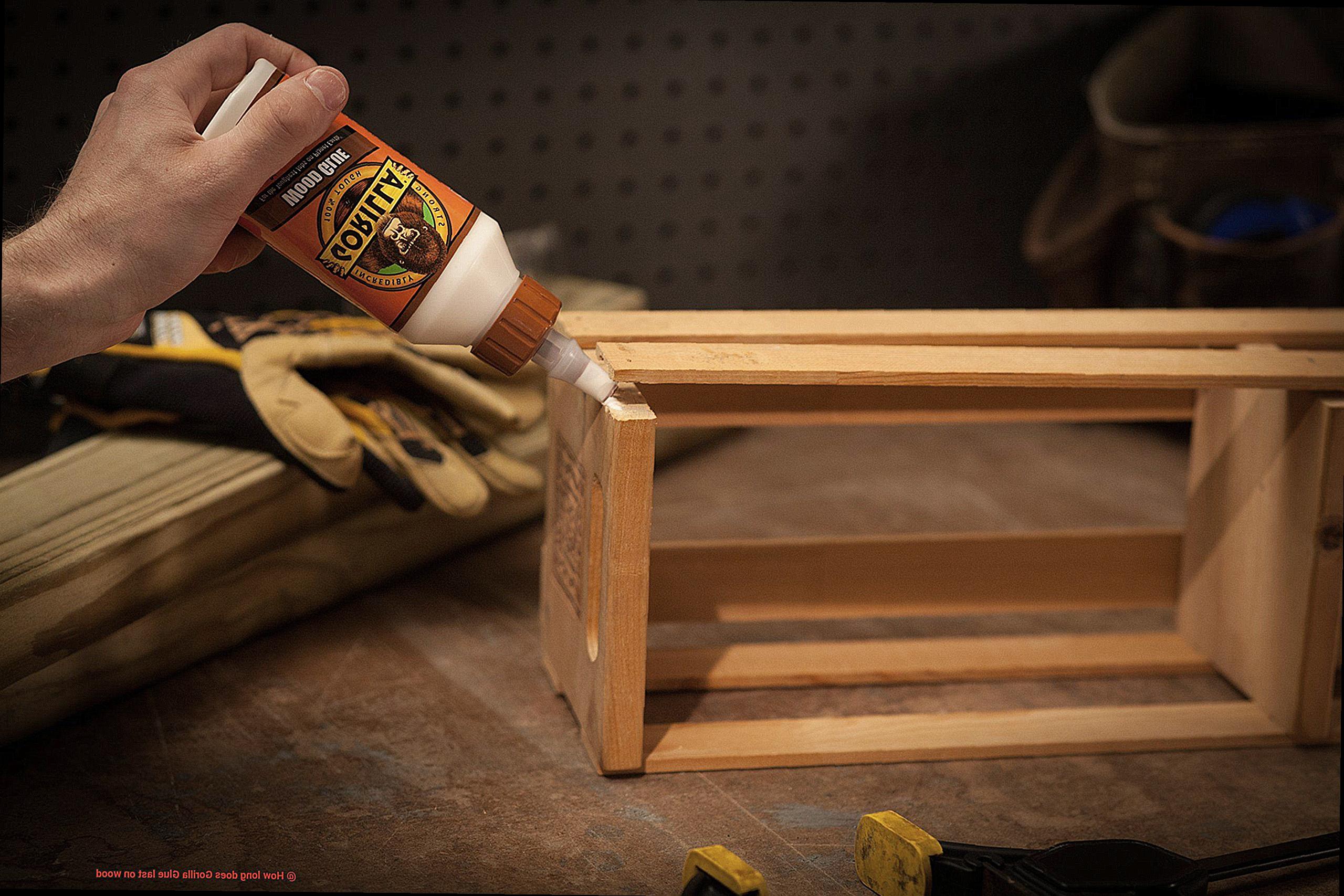
When it comes to bonding wood, Gorilla Glue is a popular choice known for its exceptional strength and durability. However, several factors can influence how long the bond will last. In this article, we will explore the key factors that affect the longevity of Gorilla Glue on wood and provide valuable tips for maximizing its lifespan.
- Type of wood: Porosity levels and moisture content vary between different wood types. Softwoods like pine are more porous and may absorb more glue compared to hardwoods like oak. This can impact how well the glue adheres to the wood surface and ultimately affect its longevity.
- Surface preparation: Properly preparing the wood surface is crucial for achieving a strong bond. Ensure that the surface is clean, dry, and free from dust, dirt, or oils that could hinder adhesion. Enhance the bond strength by creating a rough texture through sanding.
- Application method: Follow the manufacturer’s instructions when applying Gorilla Glue to ensure optimal results. Applying too much or too little glue can compromise the bond strength. Evenly spread the glue across the entire surface to ensure consistent adhesion.
- Clamping pressure: During the curing process, applying sufficient clamping pressure is essential. This helps squeeze out excess glue and ensures maximum contact between the adhesive and wood surfaces. Insufficient pressure may result in weak bonds that are prone to failure over time.
- Environmental conditions: Factors such as temperature and humidity can significantly impact the longevity of Gorilla Glue on wood. Extreme temperature variations or high humidity levels can affect the curing process and weaken the bond. Consider these factors when using Gorilla Glue on wood to maximize its durability.
- Maintenance and care: Regular maintenance and proper care can extend the lifespan of Gorilla Glue on wood. Avoid exposing the glued surfaces to excessive moisture, direct sunlight, or extreme temperature fluctuations. Providing an extra layer of protection by applying a sealant or varnish can further increase its longevity.
How Does Gorilla Glue Create a Strong Bond?
Imagine a glue that can stand the test of time, holding together the pieces of your beloved furniture or any wooden project for years to come. Look no further than Gorilla Glue, renowned for its incredible strength and durability. In this article, we’ll explore the science behind Gorilla Glue’s potent bond and why it’s the go-to adhesive for wood enthusiasts.
The Power of Polyurethane:
At the heart of Gorilla Glue lies a powerful ingredient called polyurethane. This unique polymer forms the backbone of the glue, offering exceptional bonding capabilities. When applied to wood, polyurethane creates a fortress-like connection that can withstand various stresses. It’s like an invisible army that fortifies and holds everything together.
A Foaming Marvel:
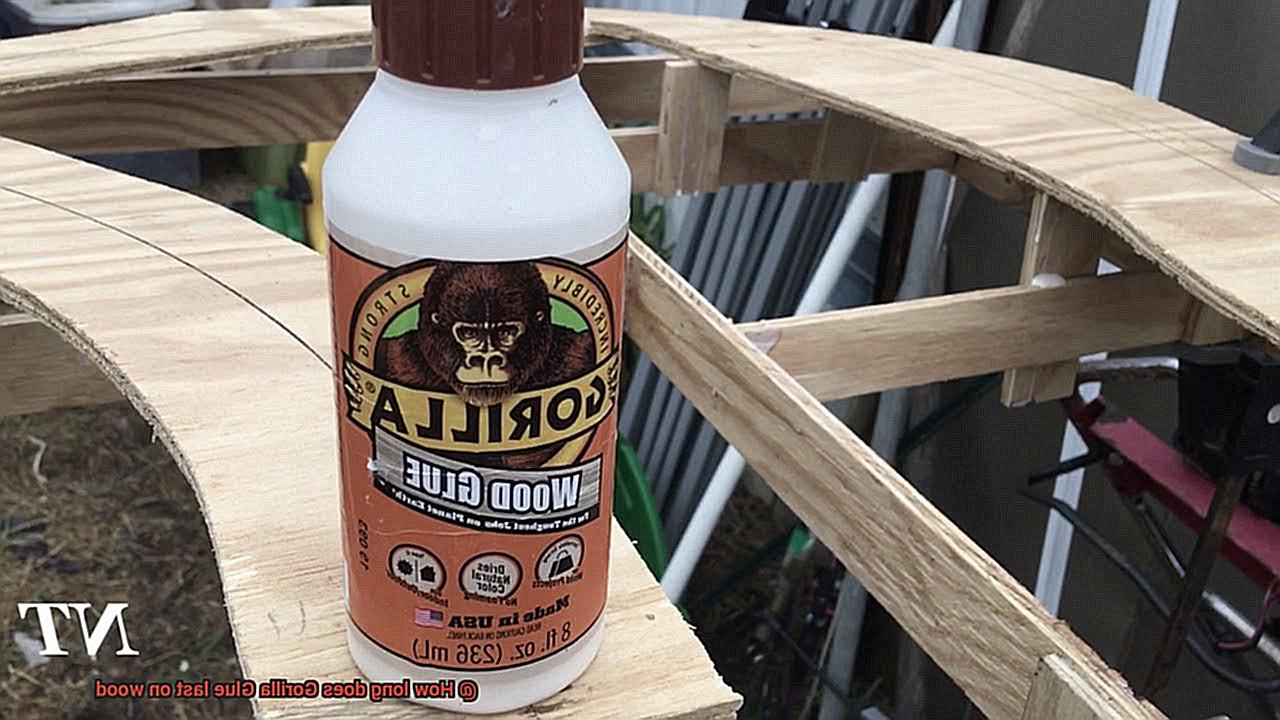
When Gorilla Glue encounters moisture, a fascinating chemical reaction called curing takes place. This reaction causes the glue to expand and transform into a foam-like substance. This expansion property allows the glue to fill in gaps and irregularities in the wood surface, creating a bond so tight, it feels like nature itself has woven the pieces together.
Penetration is Key:
Gorilla Glue’s strength also comes from its ability to penetrate deep into the fibers of the wood. Like tiny tendrils seeking connection, it seeps into the pores, establishing an adhesive grip that is incredibly difficult to break. This deep bond enhances the overall durability of the joint, making it withstand even the most vigorous challenges.
Versatility at Its Best:
One of Gorilla Glue’s most impressive qualities is its versatility. It doesn’t discriminate between hardwoods, softwoods, or engineered woods; it bonds with them all. Whether you’re working on delicate craft projects or constructing sturdy furniture, Gorilla Glue is a steadfast ally that adapts to any woodworking endeavor. It’s the glue that seamlessly bridges the gap between precision and strength.
Weatherproof Wonder:
Once fully cured, Gorilla Glue becomes a fortress against the elements, forming a waterproof and weatherproof bond that can withstand even the harshest environmental conditions. From humid summers that suffocate with moisture to freezing winters that bite with icy winds, your wooden creations will remain steadfast and unyielding.
Indoor Applications: Long-Lasting Bond
Indoor applications require a bond that can withstand the test of time, and Gorilla Glue is the ultimate adhesive for this purpose. Its reputation for strength and durability makes it the go-to choice for all your indoor bonding needs.
The key to achieving a long-lasting bond with wood lies in proper preparation. Before applying Gorilla Glue, ensure that the wood surfaces are thoroughly cleaned, dry, and free from any contaminants or finishes. Don’t let anything interfere with the bonding magic.
Here’s a neat trick: Gorilla Glue is moisture activated. This means you need to slightly dampen one of the surfaces before applying the glue. Moisture acts as the catalyst for creating an incredibly strong bond, so don’t skip this crucial step.
Once applied, watch in awe as Gorilla Glue expands and fills in every gap and imperfection on the wood surface. It’s like a superhero swooping in to save the day. This expansion not only guarantees a tight bond but also adds an extra layer of strength.
Now, exercise patience, my friends. Gorilla Glue requires time to work its magic. Allow at least 24 hours for it to fully cure before subjecting it to any stress or load. Trust me, patience pays off in the end.
And voila. Once cured, your bond will be resistant to water, temperature changes, and everyday wear and tear. This means you can confidently use Gorilla Glue for a wide range of indoor applications – from repairing furniture to tackling woodworking projects.
Remember, different types of Gorilla Glue are available, each tailored for specific purposes. If you’re working with wood, try Gorilla Wood Glue. It’s specially formulated for bonding wood surfaces and provides exceptional strength and durability.
One last thing: always test Gorilla Glue on a small, inconspicuous area before going all in.
Outdoor Applications: Weakening of Bond Over Time
While Gorilla Glue is renowned for its strength and durability, it’s essential to understand the factors that can compromise its powers in outdoor environments. In this blog post, we’ll delve into the main reasons why this bonding superhero may lose its grip over time, and reveal some tips to enhance its lifespan in outdoor applications.
Exposure to Moisture:
Outdoor wood surfaces face a constant onslaught of rain, humidity, and harsh weather conditions. This ceaseless exposure allows moisture to penetrate the wood and infiltrate the glue, causing it to soften and lose its adhesive prowess. The result? A weakened bond that can eventually crumble under pressure.
UV Exposure:
Sunlight carries ultraviolet (UV) rays that gradually degrade glue over time. Prolonged exposure to these rays can render the glue brittle and less effective at bonding. This is particularly true for outdoor applications where the glued area is directly exposed to sunlight.
Temperature Changes:
Wood responds to temperature fluctuations by expanding and contracting. This constant movement exerts stress on the glue joint, gradually diminishing its strength. Extreme temperature changes further exacerbate this issue, leading to an untimely bond failure.
Mechanical Stress:
Outdoor wood surfaces often bear heavy loads or endure constant movement, such as in decking or furniture. This relentless mechanical stress puts additional strain on the bond, especially if it lacks proper reinforcement or if the application demands exceptional strength.
The Importance of Precautions:
To mitigate bond weakening in outdoor applications, taking precautions is crucial. These include meticulous surface preparation, using an appropriate amount of glue, applying ample clamping pressure during drying, and shielding the glued area from direct exposure to moisture and UV rays.
Preparing Wood Surfaces for Maximum Durability
Fear not. Gorilla Glue is here to rescue you and provide the ultimate durability you’ve been seeking. But before you harness the power of this adhesive superhero, it’s crucial to prepare your wood surfaces correctly. In this comprehensive guide, we will walk you through the essential steps to ensure a bond so strong, it could withstand an earthquake.
Step 1: Cleanliness is Key
Before unleashing Gorilla Glue’s superpowers, your wood surface must be free from any dirt or debris that could weaken the bond. Grab a soft brush or clean cloth and gently whisk away loose particles like a superhero cape in the wind. Remember, a clean surface sets the stage for an extraordinary bond.
Step 2: Smooth Operator
To achieve maximum durability, your wood surface needs to be as smooth as silk. Arm yourself with fine-grit sandpaper and glide it along the wood grain like a skilled swordsman. Sanding removes imperfections and roughness that could sabotage the glue bond. Plus, it provides a larger surface area for the glue to cling onto, creating an unbreakable connection.
Step 3: Dust Buster
Don’t let sawdust be the Joker to your Gorilla Glue Batman. After sanding, vacuum away any lingering sawdust or wipe it clean with a cloth. Leaving even a speck of sawdust behind can be disastrous for the bond. So channel your inner vigilante and eliminate sawdust like it’s your sworn duty.
Step 4: The Drying Game
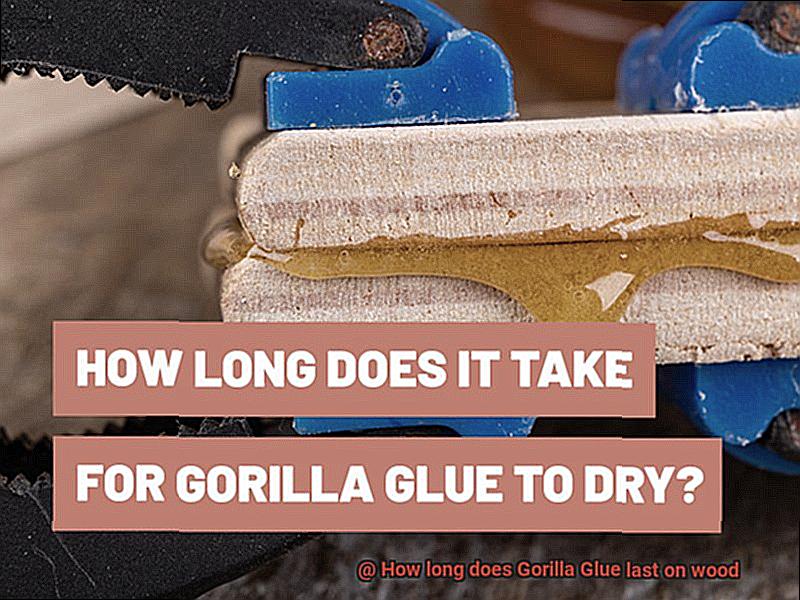
Moisture is the kryptonite of adhesives, weakening their super strength. Ensure your wood surface is completely dry before applying Gorilla Glue. Give it ample time to dry, as moisture lurking in the shadows can compromise the bond. Remember, patience is a virtue when you’re aiming for unparalleled durability.
Step 5: Apply with Precision
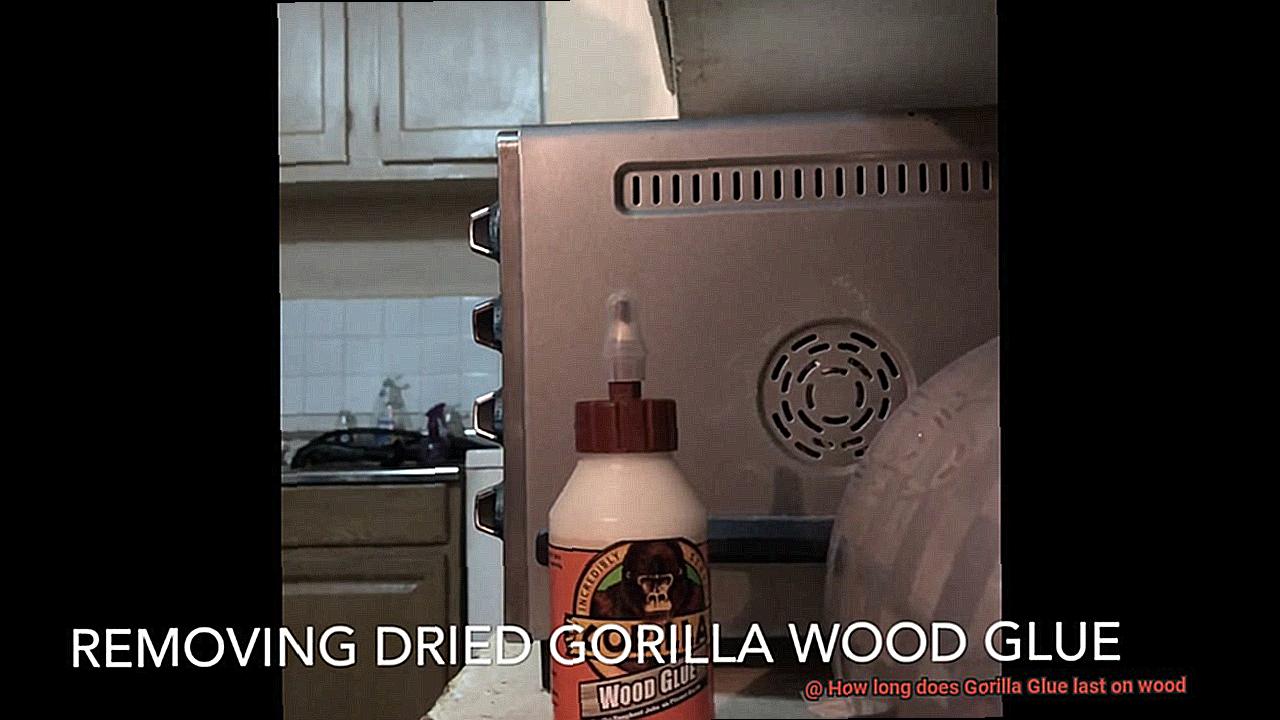
Now that your wood surface is as pristine as a hero’s cape, it’s time to unleash Gorilla Glue’s power. Apply a thin, even layer of glue onto one of the surfaces you want to bond. Be cautious not to go overboard, as excess squeeze-out can weaken the bond. In this case, less truly is more.
Step 6: Unite and Conquer
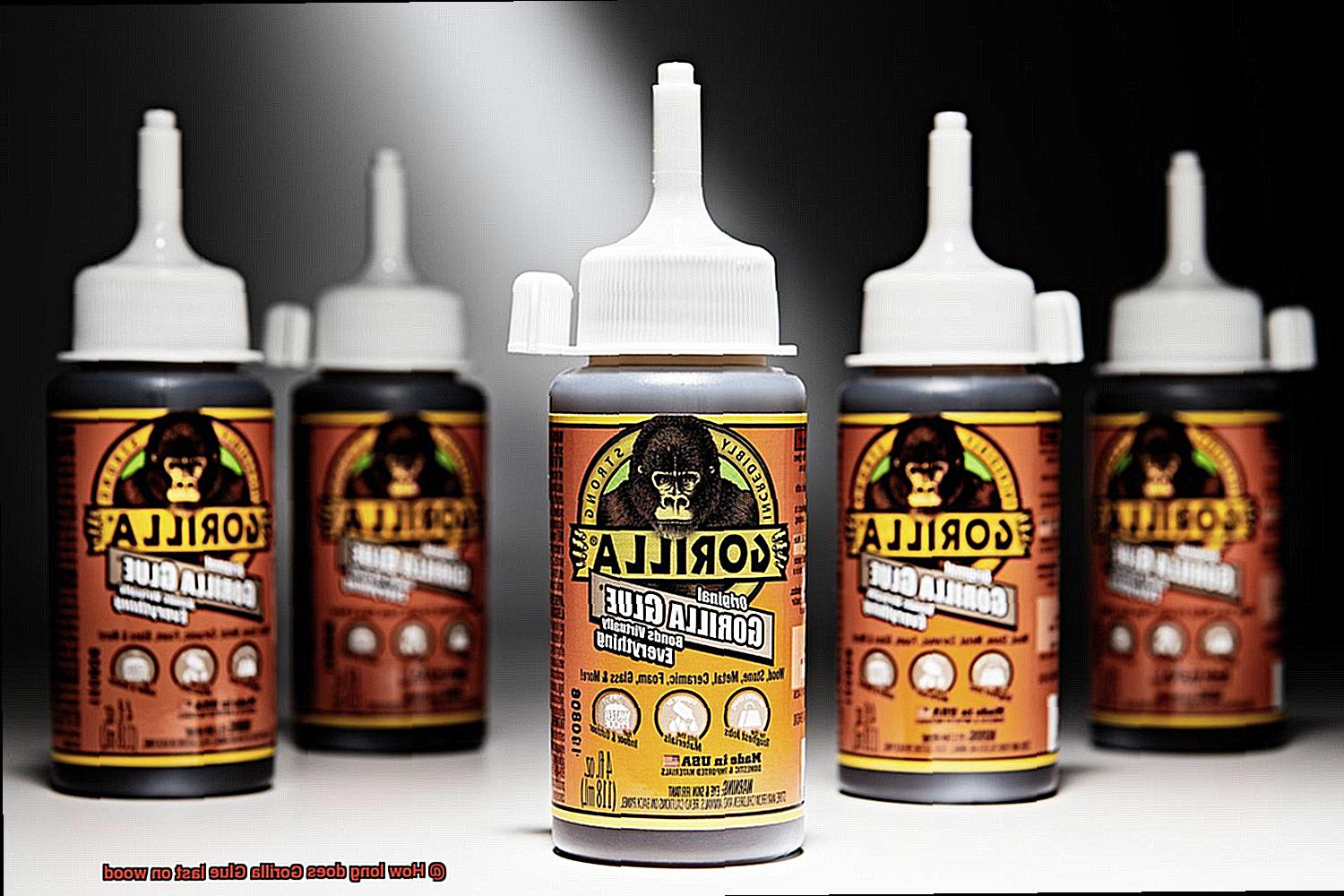
Once the glue is applied, bring the surfaces together like a superhero team assembling to save the day. Clamp or hold them firmly in place to allow the glue to cure properly. Follow the manufacturer’s instructions for curing time, as temperature and humidity can influence the process. Remember, a secure bond requires patience and teamwork.
Following Manufacturer’s Instructions for Optimal Results
In the world of woodworking, selecting the right adhesive is essential for creating strong and durable bonds. Among woodworkers, Gorilla Glue has gained immense popularity due to its exceptional strength and versatility. However, to unlock the full potential of Gorilla Glue and ensure optimal results, it is crucial to adhere to the manufacturer’s instructions. This comprehensive guide will delve into the key steps and considerations for using Gorilla Glue in woodworking projects.
Prepare the Surface:
To kickstart your woodworking project with Gorilla Glue, meticulous surface preparation is paramount. Begin by thoroughly cleaning the wood, eliminating any dust or debris that might hinder a robust bond. Through sanding and careful wiping, you can ensure maximum bonding strength and longevity.
Apply the Perfect Amount of Glue:
Achieving optimal results hinges on applying the right quantity of Gorilla Glue. Too much glue can lead to unruly overflow and messy outcomes, while too little may result in feeble bonding. The manufacturer’s instructions provide specific guidelines on the appropriate amount of glue to employ for different applications.
Clamp Firmly:
To guarantee even pressure distribution and proper bonding, securely clamp the wooden pieces together after applying the adhesive. While the recommended clamping time may vary depending on the specific Gorilla Glue variant, it is generally advisable to leave the clamps undisturbed for at least one to two hours.
Account for Temperature and Humidity:
Temperature and humidity significantly impact Gorilla Glue’s curing process. For optimal results, maintain a temperature range of 70-100°F (21-38°C) and a relative humidity of 50-70%. Extreme temperatures or excessive humidity can impede curing time and compromise overall bond strength.
Clean Up Excess Glue:
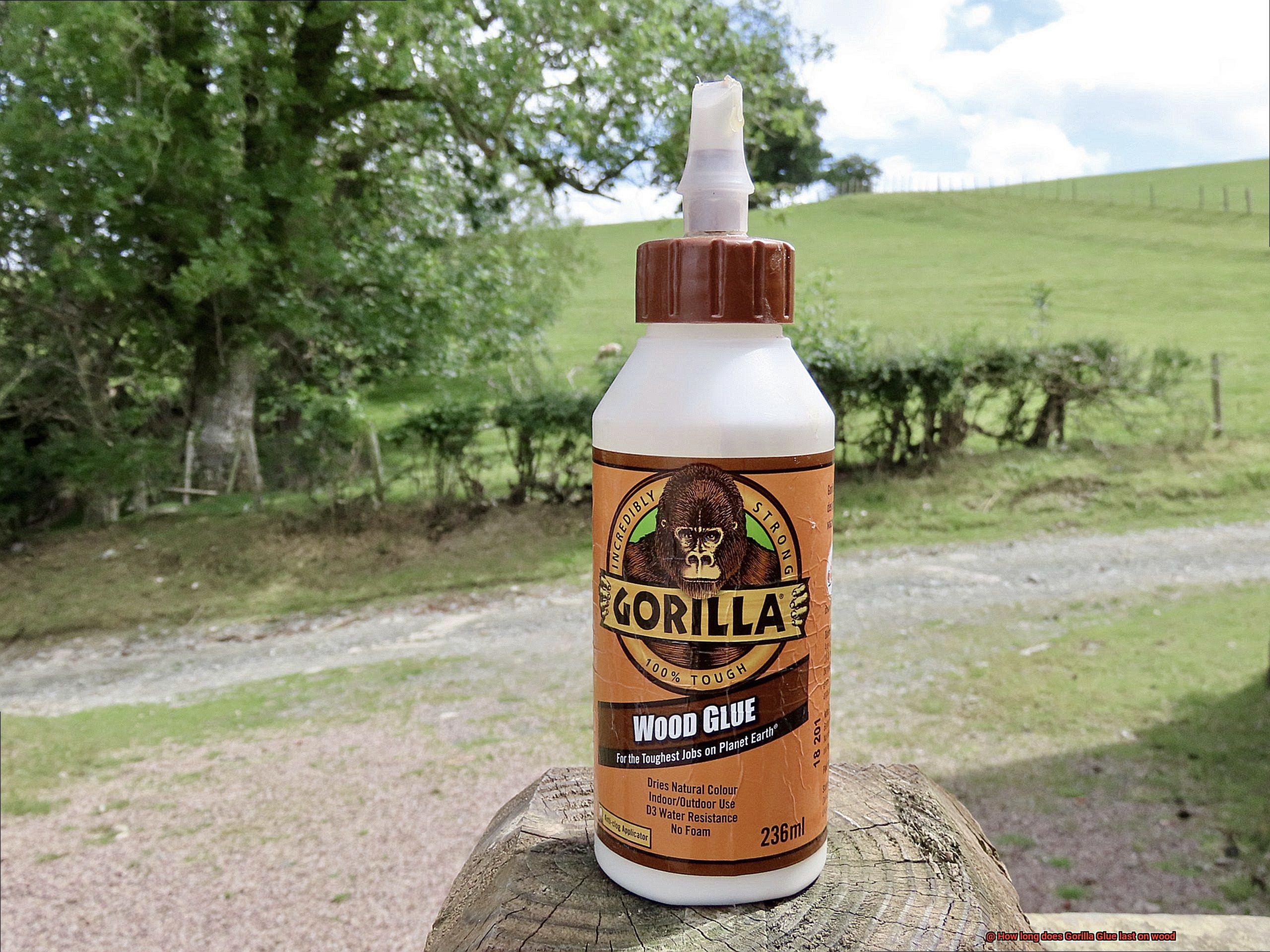
While Gorilla Glue is still in its wet state, promptly remove any excess using a damp cloth or sponge. Once the glue cures, removing excess becomes arduous without risking damage to the wood surface.
Allow for Ample Curing Time:
Gorilla Glue typically requires approximately 24 hours to fully cure and establish a steadfast bond. During this critical period, avoid subjecting the glued wood to extreme temperatures or excessive moisture, as it may compromise the adhesive’s performance.
Maintain and Care for the Bonded Wood:
To extend the lifespan of your Gorilla Glue bond, exercise caution by avoiding heavy impacts or excessive bending. Regular maintenance and care of the wood surface are imperative for safeguarding the exceptional strength that Gorilla Glue provides.
Additional Support to Ensure Secure and Long-Lasting Bond
When it comes to securing and maintaining a long-lasting bond in your woodworking project, Gorilla Glue is the go-to adhesive. But did you know there are additional measures you can take to enhance its strength and durability? Let’s explore these measures and unlock the full potential of Gorilla Glue.
First, it all starts with surface preparation. Before applying Gorilla Glue, make sure your wood surface is pristine – clean, dry, and free from any dust or debris. Remove any existing finishes or coatings to allow the glue to adhere directly to the wood. Starting with a clean slate sets the stage for success.
Now it’s time to apply the glue. Remember, Gorilla Glue expands as it cures, so use it sparingly. Too much glue can lead to foaming or oozing out of the joint, compromising both appearance and integrity.
To ensure an even stronger bond, apply pressure during the bonding process. Clamp the glued pieces together firmly. This allows the glue to spread evenly and creates a robust bond between the wood surfaces.
Once the glue is applied and pressure is applied, consider curing time. Gorilla Glue’s full cure time can vary based on factors like temperature and humidity. Allow at least 24 hours for full curing. During this period, avoid any movement or stress on the bonded pieces to ensure a solid bond.
While Gorilla Glue offers resistance to moisture and temperature changes, extra protection never hurts. Apply a waterproof sealant or finish over the glued area to prevent moisture from weakening the bond over time.
Regular inspection and maintenance are crucial for a long-lasting bond. Keep an eye out for signs of degradation or weakness in the bonded area and address them promptly to prevent further damage or failure.
Breaking or Removing Gorilla Glue from Wood Surfaces
Found yourself in a sticky situation with Gorilla Glue on your wood surfaces? Don’t fret. We’ve got you covered with tried and tested techniques to break that bond and restore your wood surfaces to their former glory.
One of the most effective methods is to apply heat to the glue. Grab your trusty hairdryer or heat gun and set it to a low heat setting. Gently heat the glue, softening it and making it easier to scrape or peel off. Exercise caution to avoid damaging the wood or causing burns.
If heat doesn’t do the trick, try using acetone. Test it on a small and inconspicuous area first to ensure it won’t cause damage or discoloration. Soak a cloth or sponge in acetone and gently rub it over the glued area. Let it penetrate for a few minutes before removing with a scraper or peeling off.
When neither heat nor acetone works, bring in some mechanical force. Use a sanding tool like a belt sander or orbital sander. Start with coarse grit sandpaper and gradually move to finer grits until the glue is gone. Be careful not to damage the wood surface.
In stubborn cases, manual chipping may be necessary. Use a chisel or scraper to gently chip away at the glue, taking your time and being patient.
Once the Gorilla Glue is removed, clean the area thoroughly to remove any residue. Use a mild soap and warm water solution or an adhesive remover recommended for wood surfaces. Rinse well and allow it to dry completely before applying finishes or adhesives.
Remember, prevention is better than cure. Take preventive measures like using protective coverings or working on disposable surfaces when using Gorilla Glue.
Specialized Products for Specific Wood Applications
To achieve a long-lasting bond with Gorilla Glue, proper surface preparation is key. Clean and dry the wood surfaces thoroughly, removing any existing finishes, dirt, or oils that could hinder adhesion. Once prepped, apply the glue. Gorilla Glue forms a strong bond in just 1-2 hours and reaches maximum strength in 24 hours. The curing time can be influenced by temperature, humidity, and glue layer thickness. If you’re in a hurry, higher temperatures and lower humidity levels can speed up the drying process.
Clamping the wood pieces together during drying is crucial for a tight bond. Leave them clamped for at least 1-2 hours or until the glue is fully cured. Following these steps ensures a durable bond that withstands the test of time.
Gorilla Glue also offers specialized products for specific wood applications. For outdoor projects requiring waterproofing or weather resistance, Gorilla Wood Glue and Gorilla Construction Adhesive are formulated specifically for these purposes. Rain, wind, and harsh weather conditions won’t compromise your bond when using these specialized products.
It’s important to note that Gorilla Glue works well with various types of wood, including hardwoods like oak and maple, as well as softwoods like pine and cedar. However, it may not be suitable for certain oily or dense woods that have natural barriers to adhesion.
Always follow the manufacturer’s instructions and safety precautions when using Gorilla Glue or any adhesive. Wear protective gloves, avoid skin and eye contact, and ensure proper ventilation in your workspace.
Also Read: Is Gorilla Super Glue Waterproof?
Conclusion
When it comes to the longevity of Gorilla Glue on wood, you’ll be pleased to know that it lasts for a significant amount of time. This adhesive powerhouse forms an incredibly strong bond that can withstand the test of time. Whether you’re working on a DIY project or repairing furniture, Gorilla Glue proves its reliability by holding everything together securely.
Once applied to wood surfaces, Gorilla Glue creates a durable connection that remains intact for years to come. Its exceptional adhesive properties ensure that your wooden pieces stay firmly in place, even under heavy stress and constant use. This means you won’t have to worry about loose joints or weakened structures anytime soon.
But how long exactly does Gorilla Glue last on wood? Well, it’s difficult to provide an exact timeframe as several factors come into play. The type of wood, environmental conditions, and the application method all contribute to the overall durability of the bond. However, rest assured that when properly applied and given ample time to cure, Gorilla Glue can maintain its strength for decades.
Imagine a beautifully crafted wooden table standing proudly in your home, with every joint held securely by Gorilla Glue. Picture yourself using this table day after day, year after year, without any signs of deterioration or weakening. That’s the power of this remarkable adhesive – it ensures your creations stand the test of time.
So whether you’re building intricate wooden sculptures or simply fixing a broken chair leg, trust in the lasting strength of Gorilla Glue on wood.

